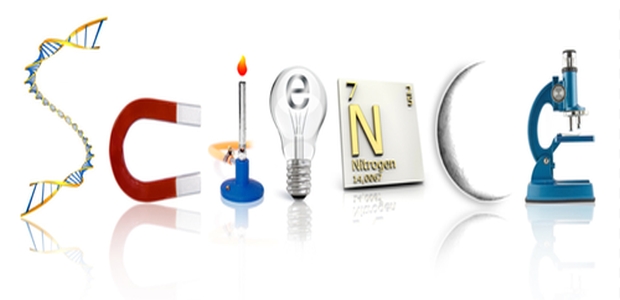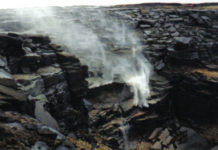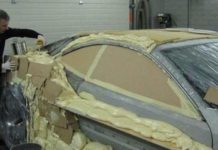Scientific discoveries don’t always happen by design. Many accidents have initiated a though process for the scientists which may have led to some of the most important discoveries mankind has ever seen. Nige Tassell reveals 10 breakthroughs in which serendipity played its part.
Teflon – In 1938, a young American scientist called Roy J Plunkett was researching new refrigerants for the DuPont Company and was storing tetrafluoroethylene gas in cylinders at low temperatures. When he opened the cylinders, the gas had disappeared, but the containers still weighed the same. Intrigued, Plunkett sawed a cylinder in half and a white powdery substance fell out. Finding it to be resistant to heat and that few other substances would stick to it, he realised the substance – polytetrafluoroethylene – could have widespread use.
Saccharin – A Russian chemist called Constantin Fahlberg was, in 1878, working at Johns Hopkins University in Baltimore, analysing the chemical compounds of coal tar. One day, he neglected to wash his hands when he left work and, eating his dinner at home, discovered that the compound sulphamine benzoic that remained on his fingers had a sweet taste. He quickly – and privately – applied for patents in several countries and saccharin made him a wealthy man.
Cellophane – In 1900, Swiss engineer Jacques E Brandenberger was eating lunch when a fellow diner spilled some wine, causing the tablecloth to be replaced. Brandenberger decided to invent a waterproof tablecloth, but the application of a liquid viscose made the covering too stiff. The coating did, however, peel off as a piece of transparent film. A new product, with strong commercial potential, was born.
Penicillin – One accidental discovery that has saved millions of lives came about as a result of bad housekeeping. In 1928, London-based Scottish scientist Alexander Fleming accidentally left a tray of staphylococcus bacteria uncovered. After a few days, bacterial growth was visible, save for a patch of mould that was stopping the bacteria’s spread. A substance produced by the mould, dubbed penicillin by Fleming, was subsequently found to kill off much harmful bacteria and became the world’s most used antibiotic.
Dynamite – The Swedish chemist Alfred Nobel owned a factory manufacturing nitroglycerin, an explosive deemed too unstable for widespread use. One day in 1867, he dropped a vial of it on the ground, but was intrigued when it didn’t explode, possibly because it had mixed with sawdust on the floor. When Nobel added a further stabiliser – silica known as kieselguhr – mass production of reliable gunpowder could begin.
Viagra – In the early 1990s, British scientists employed by the Pfizer pharmaceutical company were carrying out tests on a new compound aimed at treating angina. The trials were unsuccessful, but many of the participants reported experiencing penile erections. After further trials, Pfizer took the drug Sildenafil citrate – by now branded as Viagra – to market. By 2000, Viagra accounted for 92 per cent of worldwide sales for prescribed erectile dysfunction pills.
The Microwave Oven – In 1945, Percy Spencer, an employee of the American defence contractor Raytheon, was standing in front of a magnetron when the chocolate bar in his pocket melted. Intrigued, Spencer placed some popcorn in front of the tube. It instantly popped across the room. The commercial potential of the discovery was pounced upon; within two years, Raytheon were marketing the first microwave oven.
Vulcanised Rubber – In its natural state, rubber can rot and smell. For many years, American inventor Charles Goodyear tried to make a more durable substance. In 1839, he finally found success – by accident. Inadvertently brushing rubber powder and sulphur from his hands, it landed on a hot stove. The melting rubber reacted with the sulphur and became vulcanised – leading to Goodyear becoming a pioneer in the tyre industry.
Vaseline – In 1859, a 22-year-old Brooklyn chemist called Robert Chesebrough visited the Pennsylvanian oil fields, eager to break into the profitable industry. The oil workers told him about a sticky substance called ‘rod wax’, a by-product of the extraction process that often caused the drilling rigs to seize up. A redeeming feature was that it seemed to speed up the healing of cuts and burns. After ten years of testing, Chesebrough managed to extract usable petroleum jelly. Vaseline was born.
Super Glue – In 1942, Kodak employee Harry Coover was making plastic gunsights for military planes, but the solution he created – later named cyanoacrylate – was far too sticky. A decade later, a colleague developing jet fighter canopies used the discarded solution and its phenomenal gluing powers were rediscovered.
Discoveries will continue in this fashion and many more such discoveries which we may not even imagine could happen right under our noses. So be keenly observant of your surroundings and even you could discover something worthwhile.
-end-




































